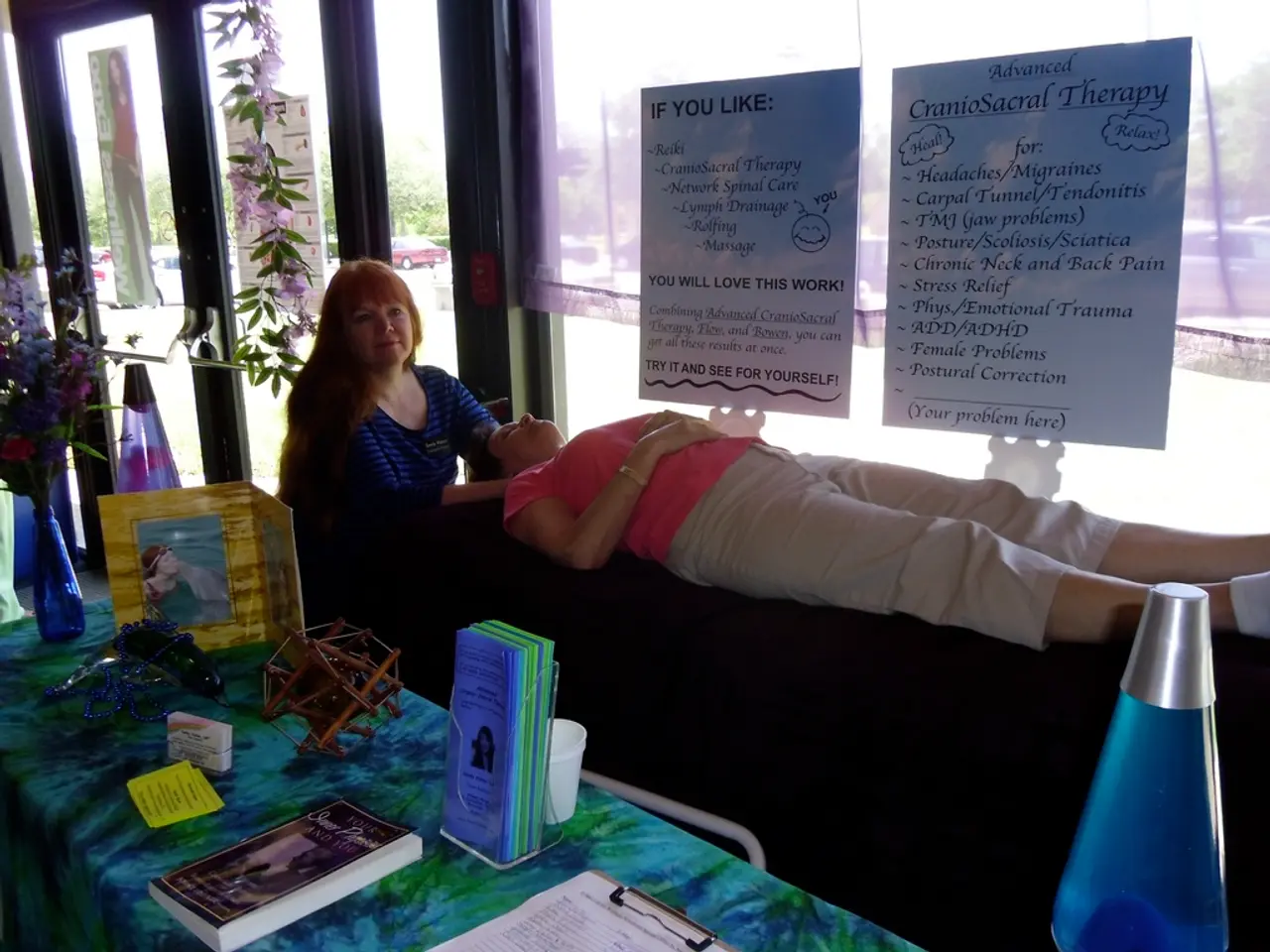Manic Episodes: Recognizing signs, identifying diagnosis, exploring treatment options, and further insights
Mania, a state of excessive excitement or agitation, can be a challenging condition for those affected and their loved ones. This article aims to provide a clear, straightforward overview of mania, its causes, symptoms, and treatment options.
Mania: Symptoms and Causes
People living with mania may find it helpful to keep track of their moods, identify personal triggers, learn to recognize warning signs, make a plan to manage a manic episode, stick to a routine, make time for relaxation and activities that reduce stress, plan and manage finances, plan for an emergency, maintain physical health, talk to family and friends about how mania feels, find a support group locally or online, and make self-care and coping strategies a priority.
Mania can be experienced as a symptom in various mental health conditions, such as bipolar disorder, schizoaffective disorder, substance-induced mania, and bipolar disorder secondary to another medical condition. The exact cause of mania is unknown, but it is thought to involve a combination of genetics, psychological, and social factors.
Environmental factors that may cause mania include high stress levels, lack of sleep or changes to sleep patterns, recreational drug or alcohol use, changes in the seasons (particularly springtime), major life changes such as moving or divorce, childbirth (which may cause postpartum psychosis), grief or bereavement, trauma or abuse, difficult circumstances such as money problems, housing issues, or loneliness, side effects of certain medications such as some antidepressants, and side effects of a physical or neurological condition such as lupus, dementia, stroke, or brain injury.
Symptoms of Mania
Symptoms of mania can include extreme high energy, reduced need for sleep, euphoric feelings, racing thoughts, impulsiveness, grandiosity, increased goal-directed actions, intense anxiety, psychosis, reckless behaviors, delusions, hallucinations, and unusual behavior compared to a person's normal behaviors.
Schizoaffective Disorder
Schizoaffective disorder is a mental health condition characterized by a combination of schizophrenia symptoms (like hallucinations or delusions) and mood disorder symptoms, such as mania or depression. Common symptoms include psychotic symptoms (hallucinations, delusions, paranoid thoughts, disorganized or confused thinking), mood symptoms (episodes of mania and depression), irritability, attention and memory problems, changes in energy, appetite, sleep disturbances, and neglect of personal hygiene.
Causes of Schizoaffective Disorder
The exact cause is unknown but involves complex factors, including genetic predisposition and brain chemistry imbalances, specifically disturbances in neurotransmitters like serotonin and dopamine. Possible prenatal exposures to toxins or viruses, as well as birth complications, may contribute to the disorder.
Treatment for Mania and Schizoaffective Disorder
A combination of medications and psychotherapy is the most effective approach for managing both mania and schizoaffective disorder.
For mania, treatment options may include antipsychotic medications such as haloperidol, risperidone, olanzapine, quetiapine, mood-stabilizing drugs such as carbamazepine, lithium, valproate, therapy or counseling, community support such as a social worker, emergency help such as going to the nearest emergency room or calling 911, electroconvulsive therapy in rare cases, and maintaining physical health by eating a nutritious diet, getting regular exercise, and plenty of sleep.
For schizoaffective disorder, treatment involves a combination of antipsychotics (such as Paliperidone, clozapine, haloperidol, olanzapine, and risperidone) to manage psychotic symptoms, mood stabilizers (like lithium, primarily to control manic episodes and mood swings), and psychotherapy aimed at normalizing thought patterns, improving social skills, reducing isolation, and helping individuals manage symptoms effectively in daily life.
In diagnosing mania, a doctor may perform tests such as a complete blood count, complete metabolic panel, thyroid panel, urine drug screening, brain imaging tests, and a psychological evaluation. A study of twins found a 40% chance of one twin having mania if the other twin also had mania, suggesting a link between genetics and mania.
Hypomania, a less extreme version of mania, with symptoms similar but less severe than mania, does not significantly affect a person's ability to function socially or in their occupation, lasts for less than a week, and most commonly affects people with bipolar II or cyclothymia.
Mania is a drastic change in a person's behavior that affects their day-to-day functioning and lasts for a week or longer. If mania is due to a mental health condition, such as bipolar disorder, a depressive episode may follow. It is crucial for those experiencing mania to seek help and support to manage their condition effectively.
- People with bipolar disorder, a mental health condition marked by episodes of mania and depression, can find it beneficial to monitor their moods and identify personal triggers.
- Schizoaffective disorder, characterized by a combination of schizophrenia symptoms and mood disorder symptoms like mania, involves complex factors such as genetic predisposition and brain chemistry imbalances.
- Treatment for mania often includes a combination of antipsychotic medications, mood-stabilizing drugs, therapy, electroconvulsive therapy in rare cases, and maintaining physical health through a nutritious diet, regular exercise, and adequate sleep.
- CBD, a compound found in cannabis plants, is being researched as a potential treatment for mania, although more studies are needed to confirm its effectiveness.
- Medicare, a federal health insurance program in the United States for people aged 65 and older, may cover some medical treatments and therapies for mania and other mental health conditions.




